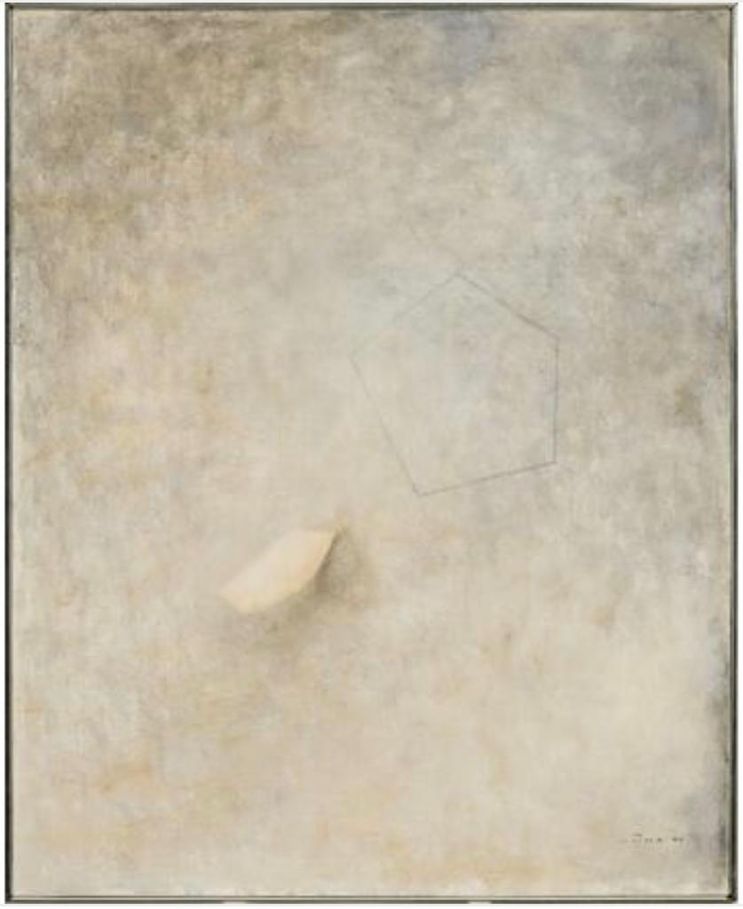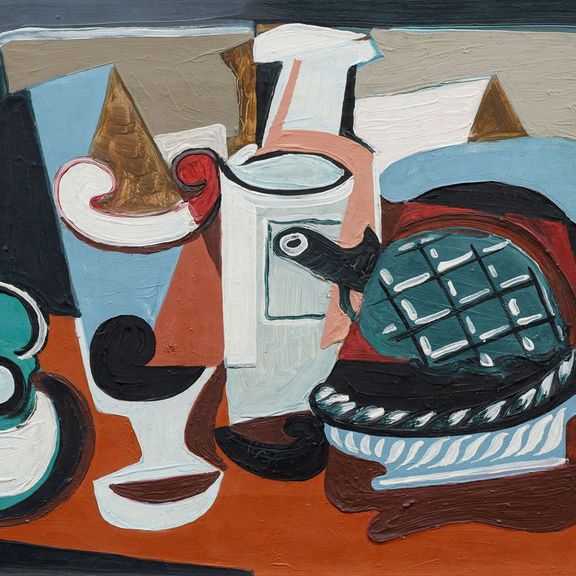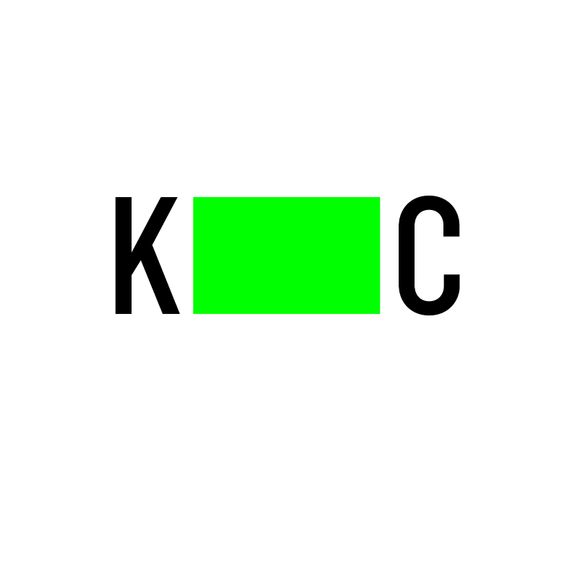
oil on canvas
1969
lower right
100 × 81 cm
framed
This extraordinarily suggestive painting perfectly represents Šíma’s significant post-war period. The year 1920, when he moved permanently to Paris, became a major milestone for him. Although he maintained active contact with the domestic environment through membership in the Devětsil group and external cooperation with the daily newspaper Lidové noviny, he quickly established himself among French artists and writers in Paris and a few years later became the lead artist of Le Grand Jeu (The Great Game) group. After a few-year hiatus in the early 1950s, this unique artist, who developed his work independently of contemporary tendencies, commenced his second creative period, during which he executed masterpieces characterised by extraordinary depth and a refined technique. In his mature work, he drew on from the pre-war deep-rooted metaphysical conception of painting, and remained close to the imaginative aesthetics of the philosophical poetics of Le Grand Jeu artistic group as well. His artworks, full of inner hidden power, reflected Šíma’s interest in light, science, and recent studies of matter, which, in his painting as in contemporary research, lost its consistency and became mere energy. Concrete impressions and experiences newly passed through the filter of his then rather stable art language and took on completely new forms, adapted to his mental universe and new creative intentions. The first version of the painting The Grief of Light on the Embankment (I) was created in 1969, (reproduced in colour in the artist’s largest monograph by F. Šmejkal: Josef Šíma, Prague 1988, cat. No. 416, p. 369), and so was its in fact negative imprint in the painting Blue Space I. However, the presented painting is the second version of the first-mentioned motif, and so we can tell that Šíma further explored its essence and the possibilities of its execution. The substance of this painting is a pentagon of spiritual power radiating from a light ochre background, accompanied by an irregular pentagon of earth below. However, compared to the first version, both specific shapes are shown more clearly. The pentagon below gained plasticity here; it is no longer just a light shape floating in space, but matter, a kind of island in space. And the outline of the pentagon above seems to become its reflection, the imprint in space. This artwork is considered a truly unique and rare investment opportunity on the art market. As evidenced by the stamps on the stretcher, the work was exhibited in 1973 at the Château de Ratilly (Hommage à Joseph Sima, Treigny, France). It was also exhibited in the Edwin Engelberts Gallery in Geneva in 1969 (cat. No. 8). Assessed during consultations by prof. J. Zemina and PhDr. K. Srp. From the attached expertise by PhDr. R. Michalová, PhD.: “[…] Josef Šíma put into practice his significant ‘light space’ in the assessed canvas – he created a kind of vibrating light environment, the centre of which in this case is two elements: a characteristic floating island, or even embankment, and an apt linearly outlined pentagon. [...]”







